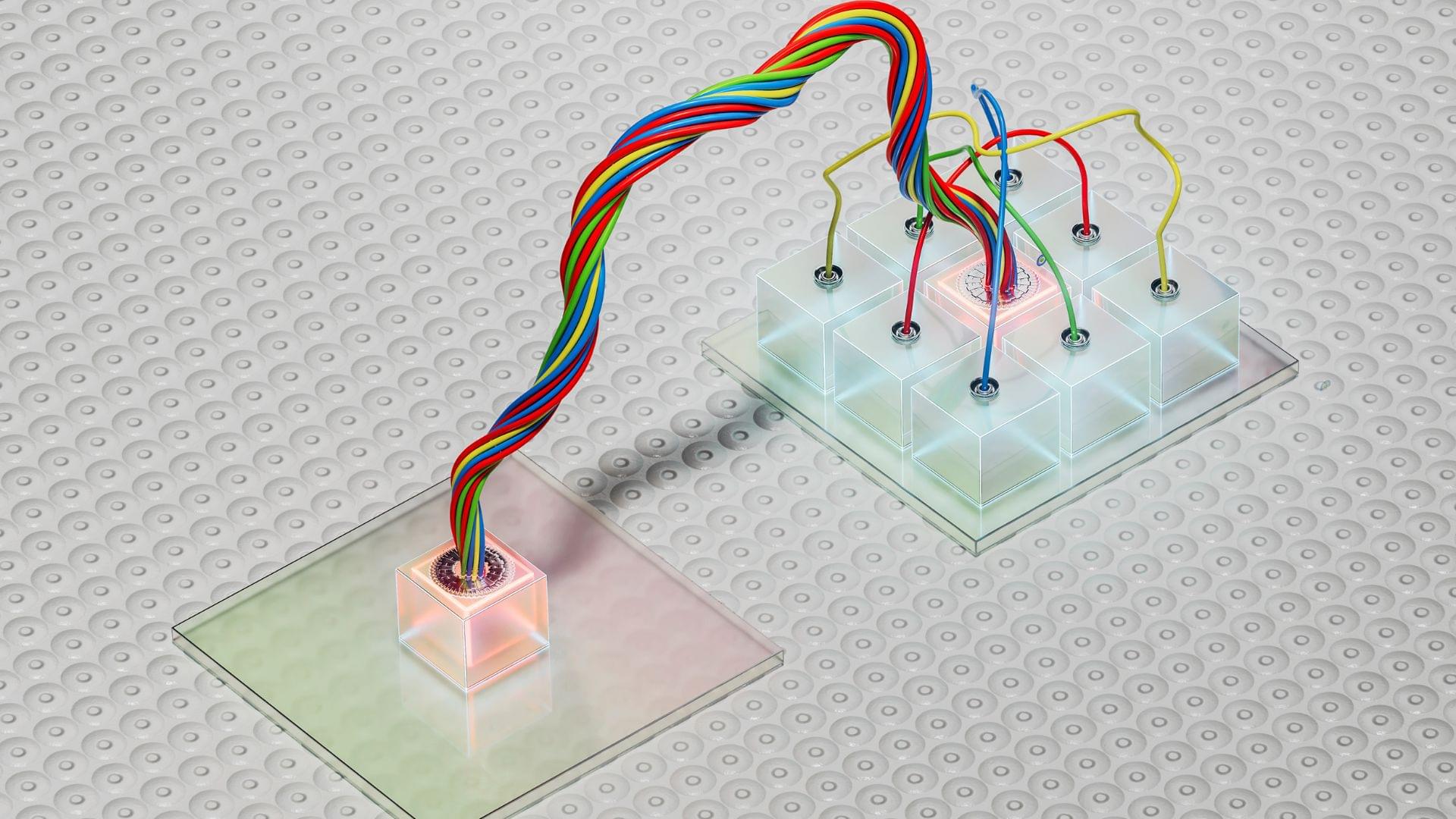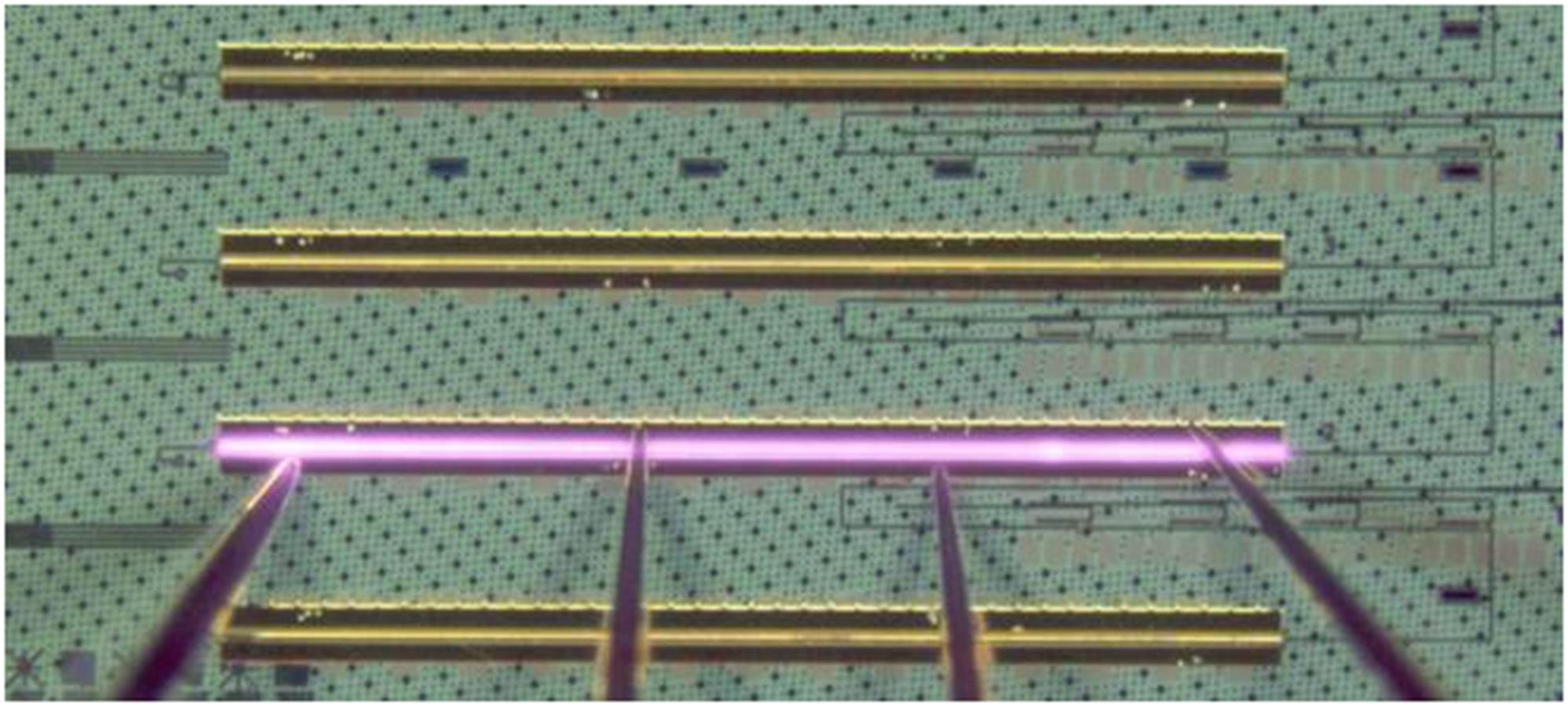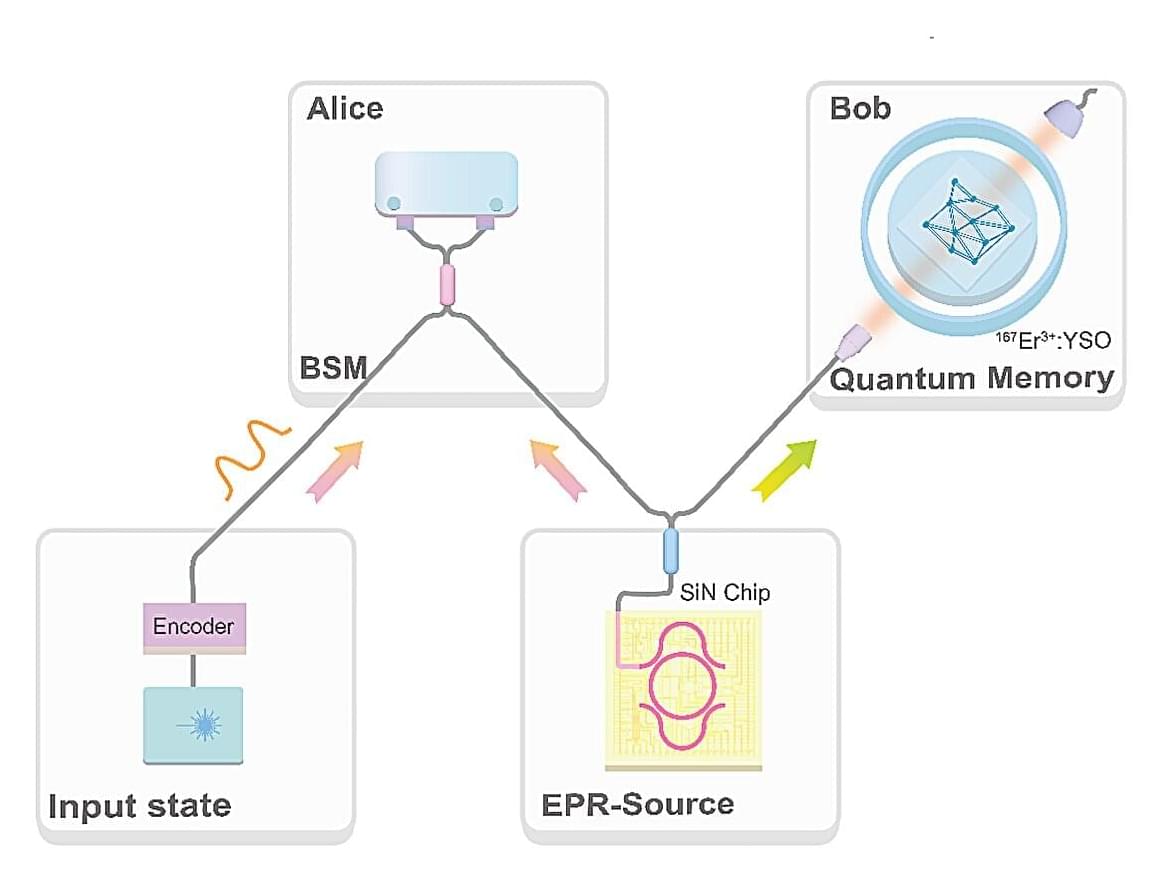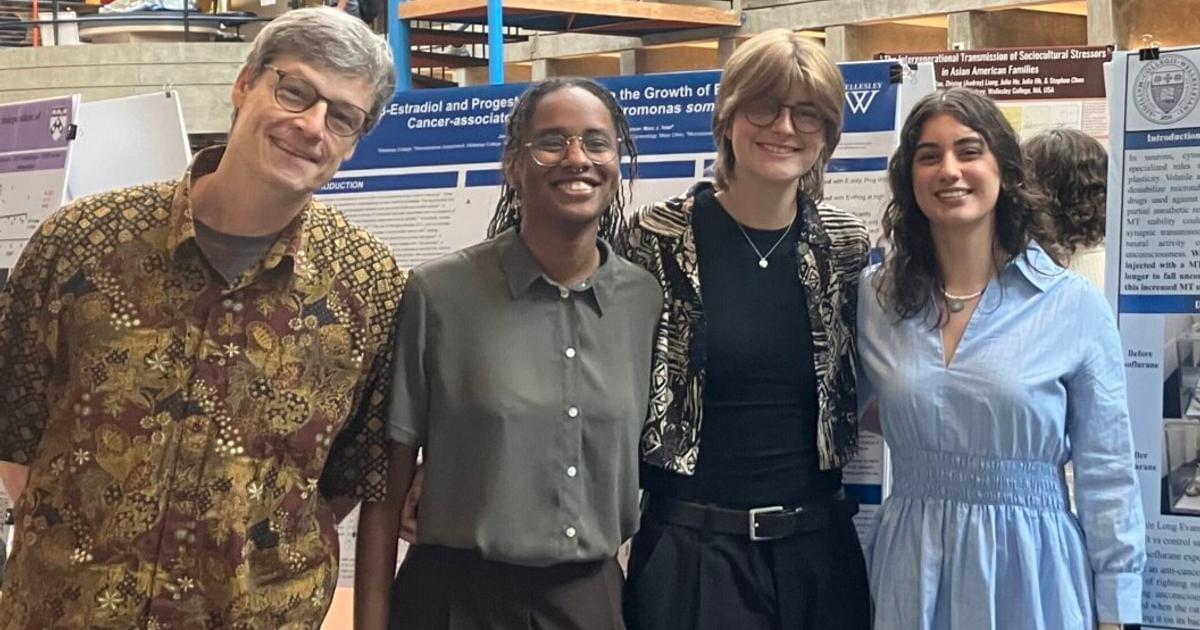In a world-first, scientists achieve quantum teleportation into telecom-band memory using standard fiber-optic tech.




The startup behind Chicago’s more than $1 billion quantum computing deal said operations are expected to start in three years, a win for Illinois Governor JB Pritzker, who backed the investment and is widely seen as a potential presidential candidate.
PsiQuantum Corp. will start construction at the state’s new quantum and microelectronics park in the South Side of Chicago later this year, Chief Executive Officer Jeremy O’Brien said in an interview at Bloomberg’s Chicago office. The supercomputer — one of two utility-scale, fault-tolerant machines the company is building globally — is expected to be online in 2028, he said.

Quantum computing is about to enter an important stage — the era of quantum advantage. The first claims of quantum advantage are emerging, and over the next few years, we expect researchers and developers to continue presenting compelling hypotheses for quantum advantages. In turn, the broader community will either disprove these hypotheses with cutting-edge techniques — or the advantage holds.
Put simply, quantum advantage means that a quantum computer can run a computation more accurately, cheaply, or efficiently than a classical computer. Between now and the end of 2026, we predict that the quantum community will have uncovered the first quantum advantages. But there’s more to it than that.
We have arrived already at a place where quantum computing is a useful scientific tool capable of performing computations that even the best exact classical algorithms can’t. We and our partners are already conducting a range of experiments on quantum computers that are competitive with the leading classical approximation methods. At the same time, computing researchers are testing advantage claims with innovative new classical approaches.

A proposed experiment could shed light on the unknown interplay of quantum theory and general relativity.
Quantum theory has been remarkably successful ever since its inception 100 years ago. And yet, there is a glaring mismatch between the discrete, quantum nature of matter and the apparent continuous, classical nature of spacetime, in which matter resides and interacts. This disparity raises profound questions. Does spacetime have indivisible units, or quanta, even though it does not seem to be divisible like matter [1, 2]? And if so, do these quanta have observable signatures, and do they influence other areas of physics? Now Jacob Covey at the University of Illinois Urbana-Champaign and his colleagues have proposed a way to address these questions [3]. Their strategy involves using a widely distributed quantum state to probe the essential features of quantum theory in the curved spacetime of Earth’s gravitational field.
The team’s proposal is relevant to the problem of quantum gravity—that is, how to coherently and logically combine quantum theory and the general theory of relativity [4]. Many researchers consider this problem to be one of the greatest unsolved puzzles in physics (although some still think that gravity should not be quantized and that the whole concept of quantum gravity might be fundamentally misguided [5]). But compared with other thriving areas of quantum theory and its manifold applications, quantum gravity remains an almost entirely theoretical enterprise that is pursued through string theory, loop quantum gravity, and many other approaches [4]. It is thus inherently nonempirical and speculative, constrained only by our current knowledge of quantum theory and general relativity.

Monolithically integrated lasers on silicon photonics enable scalable, foundry-compatible production for data communications applications. However, material mismatches in heteroepitaxial systems and high coupling losses pose challenges for III-V integration on silicon. We combine three techniques: recessed silicon pockets for III-V growth, two-step heteroepitaxy using both MOCVD and MBE, and a polymer facet gap-fill approach to develop O-band InAs quantum dot lasers monolithically integrated on silicon photonics chiplets. Lasers coupled to silicon ring resonators and silicon nitride distributed Bragg reflectors (DBR) demonstrate single-mode lasing with side-mode suppression ratio up to 32 dB. Devices lase at temperatures up to 105 °C with an extrapolated operational lifetime of 6.2 years at 35 °C.

Quantum teleportation is a fascinating process that involves transferring a particle’s quantum state to another distant location, without moving or detecting the particle itself. This process could be central to the realization of a so-called “quantum internet,” a version of the internet that enables the safe and instant transmission of quantum information between devices within the same network.
Quantum teleportation is far from a recent idea, as it was experimentally realized several times in the past. Nonetheless, most previous demonstrations utilized frequency conversion rather than natively operating in the telecom band.
Researchers at Nanjing University recently demonstrated the teleportation of a telecom-wavelength photonic qubit (i.e., a quantum bit encoded in light at the same wavelengths supporting current communications) to a telecom quantum memory. Their paper, published in Physical Review Letters, could open new possibilities for the realization of scalable quantum networks and thus potentially a quantum internet.

For decades, one of the most fundamental and vexing questions in neuroscience has been: what is the physical basis of consciousness in the brain? Most researchers favor classical models, based on classical physics, while a minority have argued that consciousness must be quantum in nature, and that its brain basis is a collective quantum vibration of “microtubule” proteins inside neurons.
New research by Wellesley College professor Mike Wiest and a group of Wellesley College undergraduate students has yielded important experimental results relevant to this debate, by examining how anesthesia affects the brain. Wiest and his research team found that when they gave rats a drug that binds to microtubules, it took the rats significantly longer to fall unconscious under an anesthetic gas. The research team’s microtubule-binding drug interfered with the anesthetic action, thus supporting the idea that the anesthetic acts on microtubules to cause unconsciousness.
“Since we don’t know of another (i.e,. classical) way that anesthetic binding to microtubules would generally reduce brain activity and cause unconsciousness,” Wiest says, “this finding supports the quantum model of consciousness.”
Beyond Space-Time and Quantum Mechanics.
Nima Arkani-Hamed.
(June 28, 2025)
A tribute to jim simons in celebration of the importance of basic science and mathematics.
Leaders in mathematics, science and philanthropy gathered on June 27, 2025, to remember the incredible contributions of Jim Simons and to inspire continued philanthropic support of basic research.
Karl Friston, Michael Levin, and Chris Field sit down for an epochal conversation on cognition and consciousness.
Sponsor: Brilliant: https://brilliant.org/TOE for 20% off.
Patreon: https://patreon.com/curtjaimungal.
Crypto: https://tinyurl.com/cryptoTOE
PayPal: https://tinyurl.com/paypalTOE
Twitter: https://twitter.com/TOEwithCurt.
Discord Invite: https://discord.com/invite/kBcnfNVwqs.
iTunes: https://podcasts.apple.com/ca/podcast/better-left-unsaid-wit…1521758802
Pandora: https://pdora.co/33b9lfP
Spotify: https://open.spotify.com/show/4gL14b92xAErofYQA7bU4e.
Subreddit r/TheoriesOfEverything: https://reddit.com/r/theoriesofeverything.
Merch: https://tinyurl.com/TOEmerch.
CORRECTION:
- Chris Fields emailed me the following: “I referred to Peter Strawson when I meant to refer to his son, Galen Strawson, who has done the work on panpsychism.”
LINKS MENTIONED:
- Curt’s AMA #:3 https://youtu.be/SX9q2D6b5bc.
- Karl Friston #2: https://youtu.be/SWtFU1Lit3M
- Karl Friston #1: https://youtu.be/2v7LBABwZKA
- Michael Levin: https://youtu.be/Z0TNfysTazc.
TIMESTAMPS:
00:00:00 Introduction.
00:03:20 Michael Levin answers: “What do you respect about Chris / Karl?“
00:04:45 Chris Fields answers: “What do you respect about Michael / Karl?“
00:05:45 Karl Friston answers: “What do you respect about Chris / Michael?“
00:07:46 Self organization / Autopoiesis / Why does life form?
00:12:11 How does cognition emerge from smaller parts?
00:14:18 Why do we see “things” independent from one another? Why in space / time?
00:18:40 Relationship between cognition and consciousness.
00:22:03 The Meta Hard Problem.
00:30:37 Why is complexity associated with “awareness”?
00:35:56 Is society one large brain, with each person acting as a neuron?
00:44:17 Duality between: Did you act on the world? Or did the world act on you?
00:51:32 Babbling, and becoming a “self“
01:11:22 “300 milliseconds” is a special unit of time for consciousness.
01:15:49 Quantum Babbling.
01:21:49 The difference between “randomness” and “quantum randomness“
01:30:03 The difference between “external” and “internal” are both real and illusory.
01:33:41 Studying consciousness / the self and the concomitant existential dread.
01:48:19 Michael Levin: “Something important goes all the way down“
01:51:12 Science starts with faith.